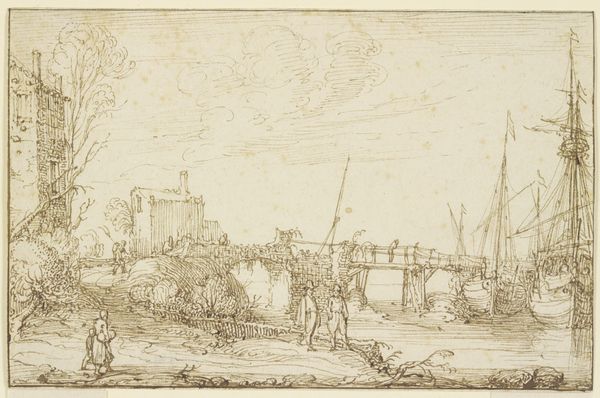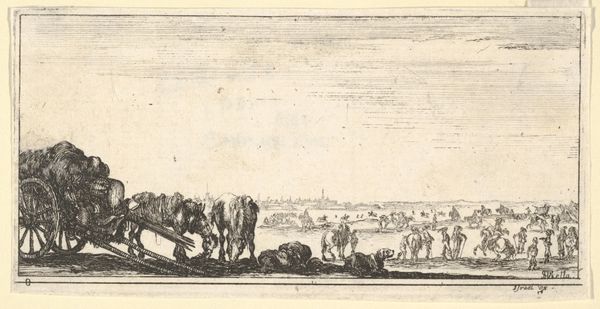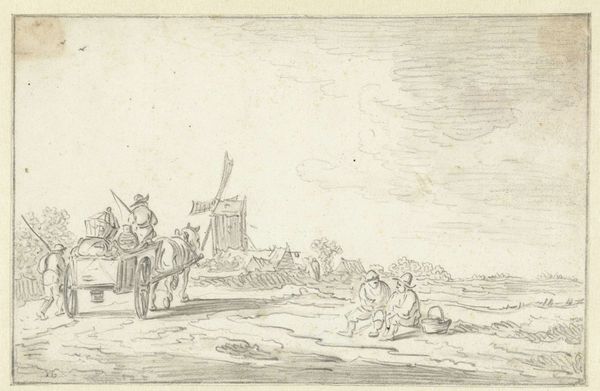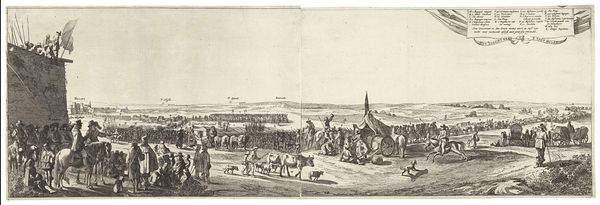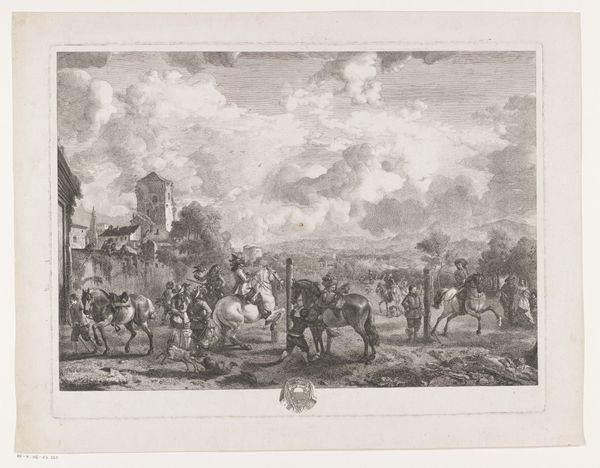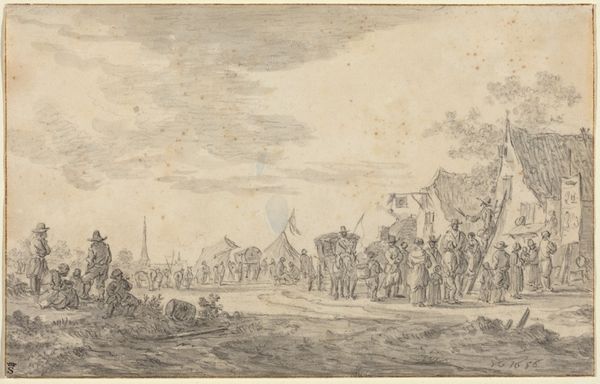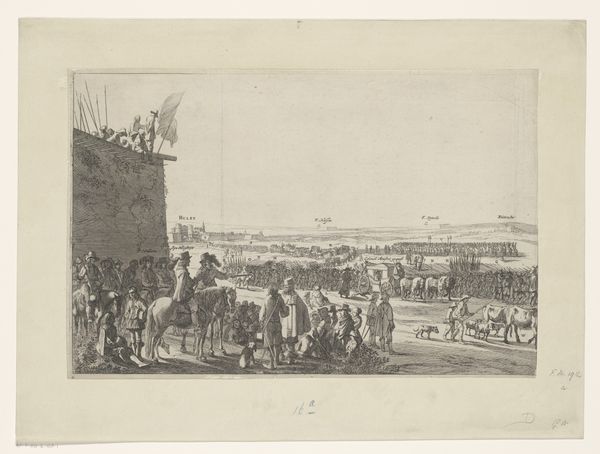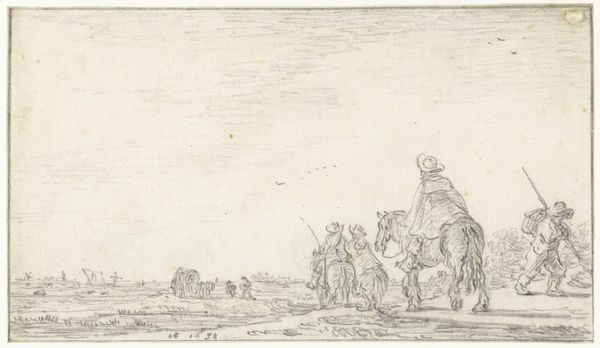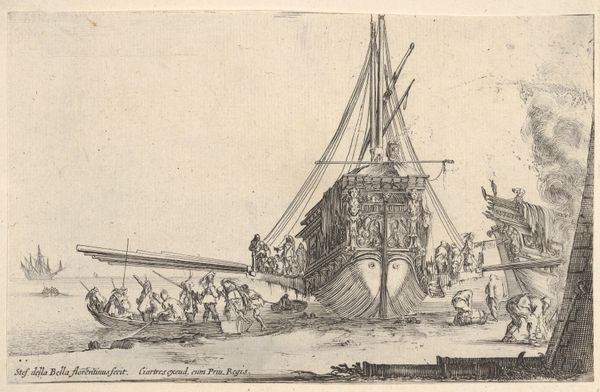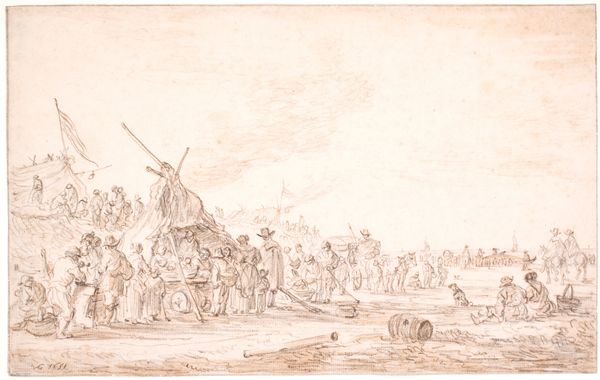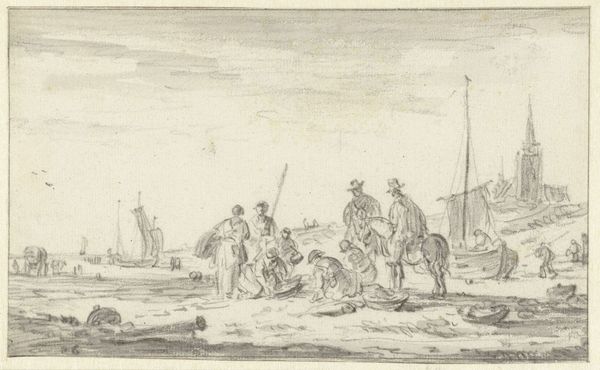
Plate 1: soldiers waiting to board a ship, from 'Various Embarkations' (Divers embarquements) 1641 - 1652
0:00
0:00
drawing, print, etching
#
drawing
#
baroque
#
ship
# print
#
etching
#
landscape
#
soldier
#
history-painting
Dimensions: Plate: 3 × 6 3/8 in. (7.6 × 16.2 cm) Sheet: 3 1/16 × 6 1/2 in. (7.8 × 16.5 cm)
Copyright: Public Domain
Curator: This etching, crafted between 1641 and 1652 by Stefano della Bella, is titled Plate 1: soldiers waiting to board a ship, from 'Various Embarkations'. It captures a scene of military transit, rendered in incredible detail. My first thought, frankly, is one of subdued tension. It is impressive that he made it a print using the technique of etching! Editor: My immediate impression is less about tension and more about the sheer labor represented here. The figures bent under heavy loads, the scale of the ships against the human form... It speaks to the massive undertaking of military campaigns, and the individual toil involved. Curator: Exactly, and that’s where the process becomes so compelling. Della Bella, through etching, is engaging with printmaking as a means of mass production and distribution. These images would have circulated widely, shaping perceptions of military might and movement. This reveals much about Baroque sensibilities. Editor: And the social context, the implicit message? It’s not just about glorifying power; it subtly comments on the class structure of war, the difference between those on horseback and those carrying supplies. We need to situate this in the history of class disparities. What about the lack of detail in the individual soldiers' faces? Curator: An interesting point about labor! Though consider that the etcher's work too, the labour required for a project of this scale and level of detail, especially when one thinks of the chemical process required... It does allow for this incredible reproduction to disseminate a certain message! It really opens up the artwork's reach. Editor: A potent reach, absolutely, disseminating messages that were inherently gendered and racialized as well. Who exactly *are* these soldiers? What roles did women and other marginalized identities play, even if invisibly, in this theater of war? The work serves as a historical text but demands intersectional questioning to fill its omissions. Curator: A blindspot inherent to its time, certainly. Della Bella’s focus seems primarily geared to depict the sheer organization involved, how resources and personnel flowed to support military operations, a feat only attainable thanks to etching technologies, I think. He almost made it "machinistic," you know. Editor: I do, and thinking about it further makes it clear to me: This etching reveals so much not just about its subject, but about the society that produced and consumed it, reflecting contemporary hierarchies and power structures. Curator: Ultimately, examining "Various Embarkations" opens windows to understand better the labour that goes into military machinery. Editor: Precisely, allowing us to understand and situate it better within that historical-political landscape.
Comments
No comments
Be the first to comment and join the conversation on the ultimate creative platform.
